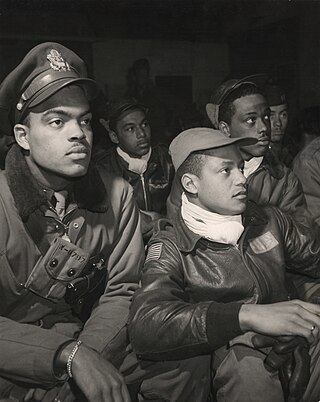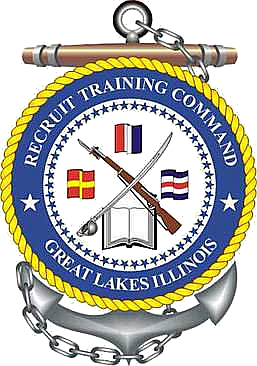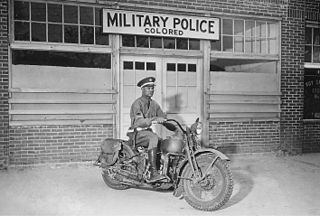A midshipman is an officer of the lowest rank in the Royal Navy, United States Navy, and many Commonwealth navies. Commonwealth countries which use the rank include Canada, Australia, Bangladesh, Namibia, New Zealand, South Africa, India, Pakistan, Singapore, Sri Lanka, and Kenya.
Ensign is a junior rank of a commissioned officer in the armed forces of some countries, normally in the infantry or navy. As the junior officer in an infantry regiment was traditionally the carrier of the regimental colours, the rank acquired the name. This rank has generally been replaced in army ranks by second lieutenant. Ensigns were generally the lowest-ranking commissioned officer, except where the rank of subaltern existed. In contrast, the Arab rank of ensign, لواء, liwa', derives from the command of units with an ensign, not the carrier of such a unit's ensign, and is today the equivalent of a major general.

The Port Chicago disaster was a deadly munitions explosion of the ship SS E. A. Bryan on July 17, 1944, at the Port Chicago Naval Magazine in Port Chicago, California, United States. Munitions being loaded onto a cargo vessel bound for the Pacific Theater of Operations detonated killing 320 sailors and civilians and injuring 390 others.
Officer Cadet is a rank held by military cadets during their training to become commissioned officers. In the United Kingdom, the rank is also used by members of University Royal Naval Units, University Officer Training Corps and University Air Squadron; however, these are not trainee officers with many not choosing a career in the armed forces.

Samuel Lee Gravely Jr. was a United States Navy officer. He was the first African American in the U.S. Navy to serve aboard a fighting ship as an officer, the first to command a Navy ship, the first fleet commander, and the first to become a flag officer, retiring as a vice admiral.
Sub-lieutenant is usually a junior officer rank, used in armies, navies and air forces.

United States Naval Reserve (Women's Reserve), better known as the WAVES (for Women Accepted for Volunteer Emergency Service), was the women's branch of the United States Naval Reserve during World War II. It was established on July 21, 1942, by the U.S. Congress and signed into law by President Franklin D. Roosevelt on July 30. This authorized the U.S. Navy to accept women into the Naval Reserve as commissioned officers and at the enlisted level, effective for the duration of the war plus six months. The purpose of the law was to release officers and men for sea duty and replace them with women in shore establishments. Mildred H. McAfee, on leave as president of Wellesley College, became the first director of the WAVES. She was commissioned a lieutenant commander on August 3, 1942, and later promoted to commander and then to captain.
Officer candidate or officer aspirant (OA) is a rank in some militaries of the world that is an appointed position while a person is in training to become an officer. More often than not, an officer candidate was a civilian who applied to join the military directly as an officer. Officer candidates are, therefore, not considered of the same status as enlisted personnel.

Jesse LeRoy Brown was a United States Navy officer. He was the first African-American aviator to complete the United States Navy's basic flight training program, the first African-American naval officer killed in the Korean War, and a recipient of the Distinguished Flying Cross.

The military history of African Americans spans African-American history, the history of the United States and the military history of the United States from the arrival of the first enslaved Africans during the colonial history of the United States to the present day. African Americans have participated in every war which has been fought either by or within the United States, including the Revolutionary War, the War of 1812, the Mexican–American War, the Civil War, the Spanish–American War, World War I, World War II, the Korean War, the Vietnam War, the Gulf War, the War in Afghanistan, and the Iraq War.

Frederick Clinton Branch was the first African-American officer of the United States Marine Corps.

The Recruit Training Command, Great Lakes, is a command unit within the United States Navy primarily responsible for conducting the initial orientation and indoctrination of incoming recruits, also known as boot camp and recruit training, or RTC. It is part of Naval Service Training Command. It is a tenant command of Naval Station Great Lakes in the city of North Chicago, Illinois, in Lake County, north of Chicago.
The US Navy had four programs for the training of naval aviators.

Camp Robert Smalls was a United States Naval training facility, created pursuant to an order signed April 21, 1942 by Frank Knox, then Secretary of the Navy, for the purpose of training African-American seamen at a time when the USN was still segregated by race.

An officer is a person who holds a position of authority as a member of an armed force or uniformed service.

A series of policies were formerly issued by the U.S. military which entailed the separation of white and non-white American soldiers, prohibitions on the recruitment of people of color and restrictions of ethnic minorities to supporting roles. Since the American Revolutionary War, each branch of the United States Armed Forces implemented differing policies surrounding racial segregation. Racial discrimination in the U.S. military was officially opposed by Harry S. Truman's Executive Order 9981 in 1948. The goal was equality of treatment and opportunity. Jon Taylor says, "The wording of the Executive Order was vague because it neither mentioned segregation or integration." Racial segregation was ended in the mid-1950s.

The Junior Reserve Officer Training Corps is a federal program sponsored by the United States Armed Forces in high schools and also in some middle schools across the United States and at US military bases across the world. The program was originally created as part of the National Defense Act of 1916 and later expanded under the 1964 ROTC Vitalization Act.

William Sylvester White, was a prosecutor, a member of the first cohort of African-Americans commissioned officers in the U.S. Navy, and the second African-American to serve as presiding judge for the Cook County Juvenile Court.
Graham E. Martin was an officer in the United States Navy and one of the Navy's "Golden Thirteen."













